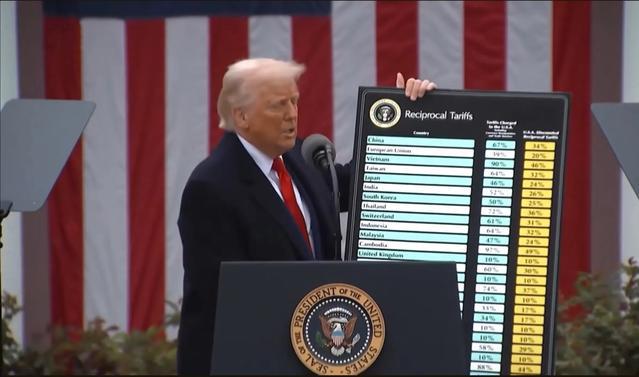Author: Prof. Engr. Zamir Ahmed Awan, Founding Chair GSRRA, Sinologist, Diplomat, Editor, Analyst, Advisor, Consultant, Researcher at Global South Economic and Trade Cooperation Research Center, and Non-Resident Fellow of CCG. (E-mail: awanzamir@yahoo.com).
President Donald Trump's tariff policies were introduced with the good intention of revitalizing American industry, protecting domestic jobs, and addressing trade imbalances. While these objectives aimed to bolster the U.S. economy as promised during his election campaign, the outcomes have been complex and, in many cases, counterproductive.
Reviving American Manufacturing
Objective: The administration aimed to rejuvenate the U.S. manufacturing sector by making imported goods more expensive, thereby encouraging domestic production.
Outcome: Contrary to expectations, the tariffs led to increased costs for manufacturers reliant on imported components, resulting in reduced competitiveness and job losses. A study by Oxford Economics and the U.S.-China Business Council concluded that the United States lost 245,000 jobs as a direct result of the Trump tariffs.
Reducing Trade Deficits
Objective: By imposing tariffs, the administration sought to decrease the U.S. trade deficit, particularly with China.
Outcome: The trade deficit did not diminish as intended. Instead, American businesses shifted their imports to other countries to avoid the Trump tariffs, and the deficit in goods increased 21% from 2016 to a record high.
Protecting National Security
Objective: Tariffs on steel and aluminum were justified on national security grounds, aiming to preserve critical industries.
Outcome: While some domestic producers benefited, downstream industries faced higher input costs, leading to decreased production and job losses in sectors like automotive and construction. A survey of leading economists indicated that imposing new U.S. tariffs on steel and aluminum would not improve Americans' welfare and could lead to more harm than gains.
Encouraging Domestic Investment
Objective: By making imports more expensive, the policy aimed to incentivize companies to invest in U.S. production.
Outcome: The uncertainty surrounding trade policies led to reduced business investment, as companies were hesitant to commit resources amid an unpredictable economic environment. Manufacturers expressed concerns that the tariffs would hurt rather than help their jobs and careers.
Unintended Consequences
Economic Impact: The tariffs contributed to a slowdown in economic growth, with the OECD reporting that Trump's tariffs were inflicting serious economic damage and reigniting inflation.
Consumer Prices: Consumers faced higher prices on a range of goods, from electronics to groceries, as companies passed on increased costs. Analysts suggested that the burden of tariffs is likely to fall on consumers due to the size of these tariffs.
Global Relations: Allies such as Canada and the EU were affected by the tariffs, leading to strained diplomatic relations and retaliatory measures. The broad implementation of tariffs offended friends and adversaries alike, damaging trust and partnerships that are crucial to American foreign policy and global diplomacy.
China's Resilience and Strategic Response
China, in response to the escalating tariffs, has demonstrated strategic resilience. By diversifying its trade partnerships and focusing on domestic consumption, China has mitigated the impact of U.S. tariffs. The Belt and Road Initiative has expanded China's economic influence, reducing its reliance on U.S. markets. Furthermore, China's measured retaliatory tariffs have been targeted to minimize domestic disruption while signaling its capacity to respond effectively to trade aggressions.
Political Ramifications
President Trump's tariff policies have not only disrupted economic stability but have also ignited significant political unrest within the United States. The increased cost of living and job losses in key sectors have led to widespread dissatisfaction among the American public. In towns like Tomball, Texas, traditionally supportive of Republican policies, residents and business owners are grappling with the economic fallout of aggressive trade tariffs. Local store owners, reliant on imported goods, have been forced to raise prices or halt shipments, leading to uncertainty and economic strain.
Similarly, in Flint, Michigan, autoworkers and small business owners express deep concern over escalated tariff initiatives, fearing economic disruptions and adverse effects on everyday goods. The General Motors Flint Assembly plant, a key economic driver, represents both hope and worry as residents grapple with higher prices and uncertainty.
These domestic challenges have political implications. The specific nature of the U.S. political system allows for expressions of dissent, and there is potential for these issues to influence upcoming elections. The economic strain experienced by middle- and low-income Americans could erode support for the current administration, making tariff policies a contentious issue in the political arena.
In contrast, China's political system emphasizes collective decision-making and long-term strategic planning. The Chinese leadership engages in broad consultations with stakeholders, experts, and relevant ministries before implementing major policies. This approach fosters public trust and unity, enabling China to navigate external economic pressures more effectively. By maintaining a stable political environment, China can implement strategic responses to international challenges without the internal political upheaval seen in more volatile systems.
The differing political structures of the U.S. and China highlight the importance of cohesive and consultative governance in managing complex economic policies. While the U.S. grapples with domestic dissent and political instability stemming from unilateral tariff decisions, China's methodical and inclusive approach allows for more resilient and adaptive policy implementation.
Conclusion
While the intentions behind President Trump's tariff policies were to protect and promote American interests, the outcomes have highlighted the complexities of global trade. The measures led to unintended economic consequences, strained international relationships, and challenges for both consumers and businesses. Moving forward, a more nuanced approach that balances protection of domestic industries with the realities of global interdependence may yield more favorable results.
(ASIA PACIFIC DAILY)
